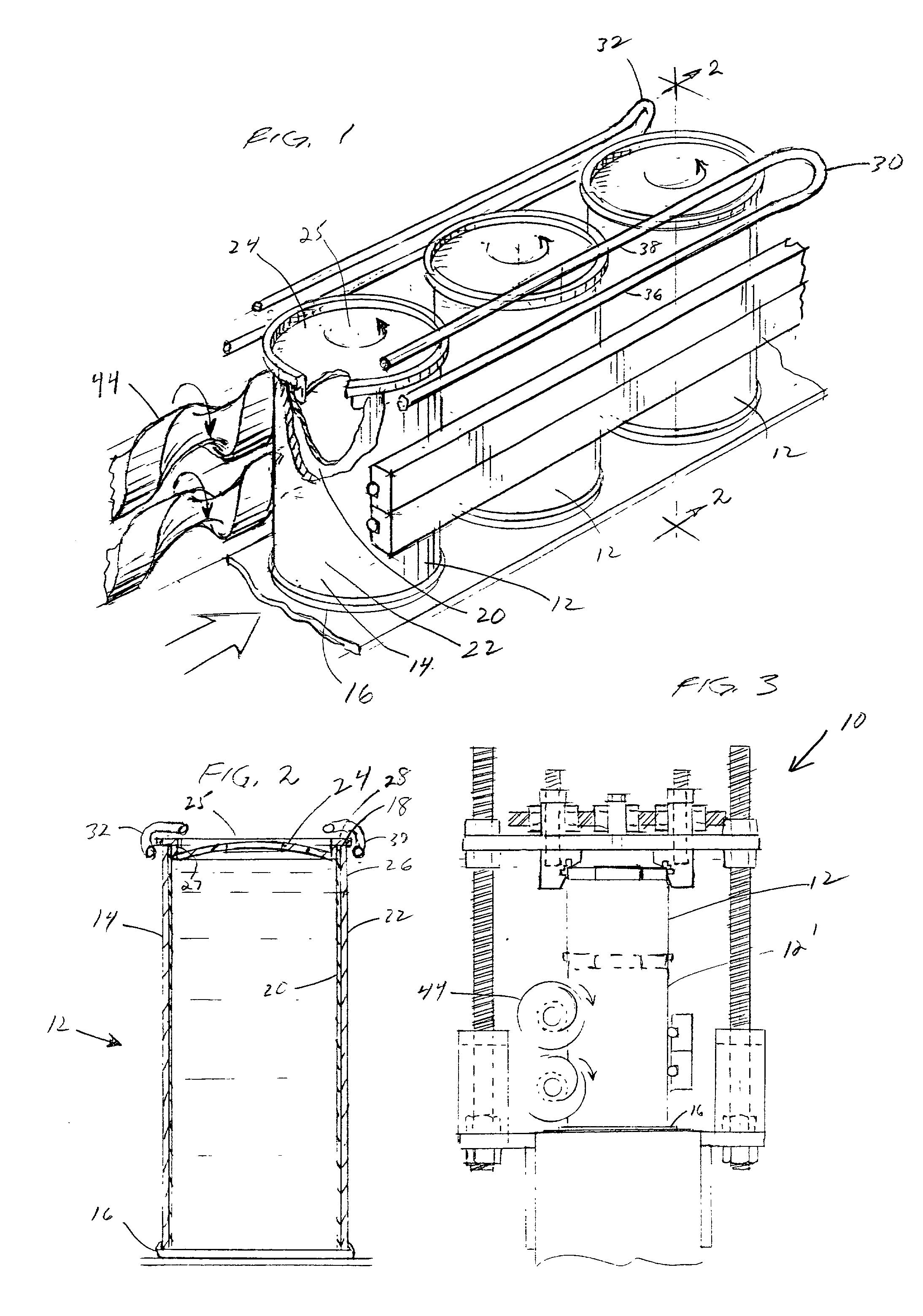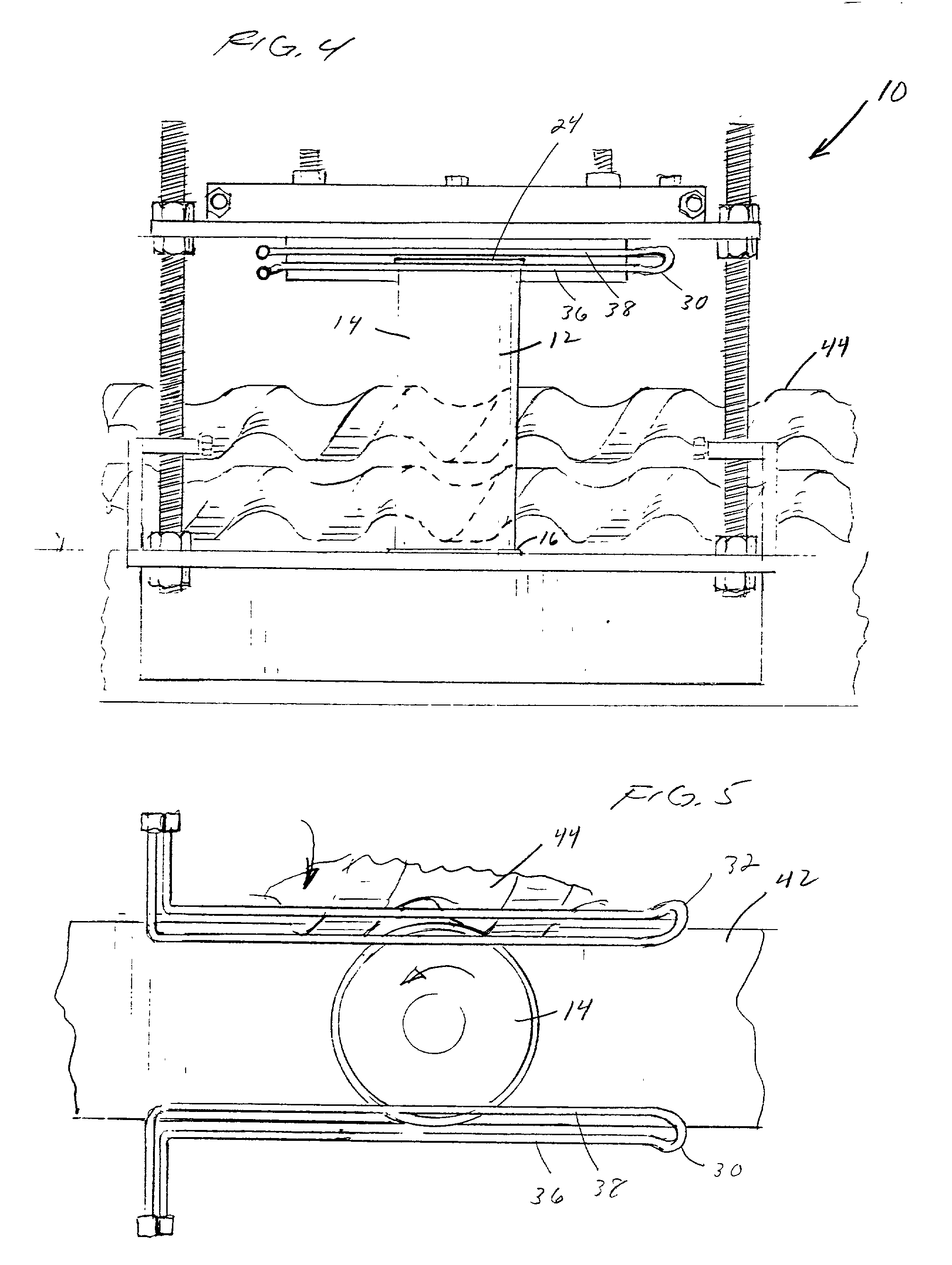Method for induction sealing a plastic part to a composite container
- Summary
- Abstract
- Description
- Claims
- Application Information
AI Technical Summary
Problems solved by technology
Method used
Image
Examples
Embodiment Construction
[0032] Molded polyethylene plastic lids were sealed onto composite containers using an induction sealing apparatus. The containers had a body comprising a polyfoil inner liner, a structural layer made from recycled paper, and an outer label made from paper and bearing graphics. The polyfoil inner liner included a layer of aluminum foil 0.00035 inches thick. The plastic lids were positioned onto the composite container so that they formed a friction fit with the inside of the top portion of the container body.
[0033] Normally, thin foils such as 0.00035 inch-thick aluminum foil typically used in composite containers do not heat well with low frequency generators (generators that generate frequencies lower than 450 KHz). Surprisingly, we found that excellent bonding between the thermoplastic liner and the plastic part could be achieved using generators that generate frequencies in the range of 80-200 KHz, such as the 15 KW generators manufactured by Lepel Corporation.
[0034] The contain...
PUM
| Property | Measurement | Unit |
|---|---|---|
| Length | aaaaa | aaaaa |
| Length | aaaaa | aaaaa |
| Length | aaaaa | aaaaa |
Abstract
Description
Claims
Application Information
 Login to View More
Login to View More - R&D
- Intellectual Property
- Life Sciences
- Materials
- Tech Scout
- Unparalleled Data Quality
- Higher Quality Content
- 60% Fewer Hallucinations
Browse by: Latest US Patents, China's latest patents, Technical Efficacy Thesaurus, Application Domain, Technology Topic, Popular Technical Reports.
© 2025 PatSnap. All rights reserved.Legal|Privacy policy|Modern Slavery Act Transparency Statement|Sitemap|About US| Contact US: help@patsnap.com



